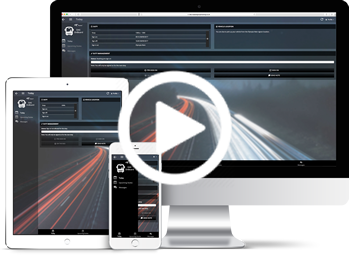Resilience, Flexibility and Increased Passenger Confidence
Global Covid-19 Response: The New Challenges of Recovery
In the latest in this series, Gavin John, Scheduling Solutions Manager at Trapeze, reviews the local and global bus sector and considers the implications for operators.
(This article first appeared in Coach & Bus Week 22 September 2020)
As you may be aware, over the past few months myself and colleagues at Trapeze have been publishing a series of articles focusing on how bus operators and other transport providers around the world have adapted to the challenges presented by the Covid-19 pandemic.
Through this process the sharing of information – both empirical data such as Nextstrain and Google’s Community Mobility Reports, and anecdotal perspectives and best practices – has been hugely valuable for all concerned.
But as public transport recovery moves into a different phase, additional requirements are emerging. At this stage I believe our focus must now turn to the restoration of confidence, and the implementation of processes that will deliver greater flexibility and robustness in the future.
Changing Demand and New Challenges
Encountering a worldwide pandemic has inevitably changed many aspects of our everyday lives, including how and when we use public transport – and where we travel to and from.
Google’s Community Mobility Reports are an invaluable tool here, showing generally increasing levels of travel, and helping to confirm behavioural patterns such as travel to and from hospitals and health centres.
At the same time, this data is throwing up some interesting insights from a public transport perspective. In the UK, travel to and within parks has unsurprisingly increased – though this typically involves walking or other forms of active travel.
Meanwhile, anticipated increases, such as to and from supermarkets, have not transpired. This suggests that perhaps the increased adoption of online shopping has now become more permanently ingrained in the populace, which will likely impact future travel patterns.
Similarly, while office travel may have picked up somewhat, it seems likely that post-Covid-19 there will be some level of wider shift towards working from home, if only some of the time and for some workers. This may be slightly worrying from a transport perspective, but in some respects it is an acceleration of an existing trend, and simply confirms the need to provide greater mobility flexibility to meet demand.
Finally, here in the UK are also seeing localised lockdowns, meaning that demand is changing by area, while fears over a ‘second wave’ remain. All of these factors clearly show that while the situation is improved, there are still huge challenges in relation to bus operations and scheduling.
Meeting Passenger Needs at Home and Overseas
In speaking with colleagues in North America I was interested to learn that real-time cleanliness reporting is now being used as an innovative way to increase passenger confidence levels. In this way, passengers can not only see live arrival and departure times; they can also be assured of when the vehicle was last cleaned.
Similarly, there is now increased focus on live loading information, indicating whether a bus is full or has capacity (in relation to present social distancing guidelines), which can be communicated out to the public via on-street signs or mobile apps.
Trapeze has actually recently undertaken some work in this area with our customer Traveline Scotland, as a result of which, passengers are now able to use their app or the Traveline website to check the number of available seats on approaching vehicles.
I know that my colleagues who delivered this innovative functionality are particularly excited because it has been developed to be easily expandable: it can easily accommodate data from additional operators and could therefore be replicated in other parts of the UK.
However, there is a significant limitation here: the data which can currently be displayed only speaks to the present loading level; it cannot tell passengers how many people will board or alight in the stops between now and the intended boarding time.
While this may appear an insurmountable obstacle, my colleague at Trapeze, Chief Technology Officer Peter Bell, believes there is a solution: by implementing the power of modern machine learning tools, we can overlay historic data with present information in order to accurately predict not only the arrival time, but the number of people who will be aboard – and therefore the available capacity.
Enter Demand Scheduling
Restoring passenger confidence is of course vital, but I believe it is also now time to consider the types of services we deliver.
Globally, some of the operators we work with have switched some services from fixed bus routes to Demand Responsive Transport (DRT), and others are now implementing ‘Flex’ routes as a way to meet changing demand. The Flex approach requires the scheduler to create a traditional fixed route with an optional element, enabling the vehicle to flex from the schedule to collect additional passengers where demand exists.
Though it may sound simple conceptually, Flex does require a different way of thinking: Bus operators would need to move away from traditional schedules in favour of a headway-based timetable, similar to that operated in London.
But this approach would deliver a return in terms of meeting passenger requirements, for whom the bus experience becomes much more demand-based. In effect it would be rather like ‘hailing’ a bus – but one that is completely integrated within the wider transport network.
Managing Future Disruption
It is now becoming clear that recovery from Covid-19 will not be straight forward. There are challenges ahead, and we must be able to adapt to whatever we face.
Additionally, without wishing to sound in any way alarmist, we should recognise the need introduce greater flexibility and resilience. My colleagues in North America haven’t only faced Covid-19 this year: there have been riots in parts of the United States, as well as significant disruption caused from extreme weather events.
While the UK has not suffered at quite the same level, climate change is an increasing risk everywhere; we are all focused on how to adapt to increasing requirements for electric vehicles; and if the past few months have taught us anything, perhaps it is that we should not take anything for granted.
I believe we must all work to deliver greater resilience in our public transport network. Suppliers such as Trapeze have a critical role to play here: by harnessing data and utilisng the latest technology we can implement systems that enable operators to keep servicing passenger requirements, and maintain that precious public confidence, whatever comes our way.

Gavin John (CMILT MTPS) has been working in the bus industry for almost 20 years. Having previously worked as a scheduler himself, Gavin is today employed globally as Trapeze’s Scheduling Solutions Manager, where he uses his knowledge of the bus and rail industry and Trapeze’s technology to help customers to achieve maximum benefit from their technology investment. Gavin is leading the Novus SchedulePlus development project.
He is keen to discuss the evolution of bus operations and can be contacted via LinkedIn.
Here to help
Contact us and speak with one of our specialists:
+44 (0) 808 281 1039
More Info
About Us | Careers | Contact Us | Legal | Privacy
(c) 1999 – 2020 Trapeze Software ULC. All rights reserved
Trapeze Group respects your privacy

